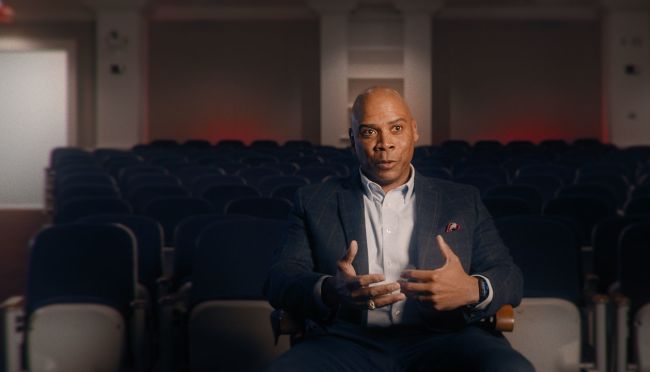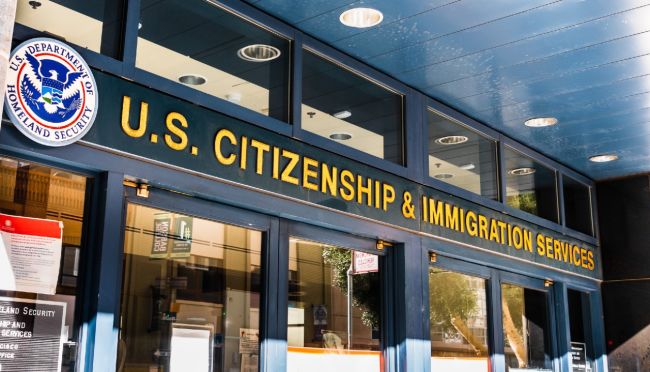Case Study: Navigating Labor Unrest
by Jorge Tamayo


Summary .
In the corner office at the Campinas plant of Luna Motors, the dim light of a desk lamp illuminated a series of charts. Paulo Ferreira, the president of Luna Brazil, had been so deep in thought he hadn’t even noticed that it was now dark outside. Each line, curve, and number on the papers in front of him painted a disheartening picture of the plant’s performance: rising defects, increasing absenteeism, and a record high in vehicles lost to labor issues. The plant was no longer competitive within the larger Luna network.
Partner Center
- Browse All Articles
- Newsletter Sign-Up

- 18 Jul 2024
- Research & Ideas
New Hires Lose Psychological Safety After Year One. How to Fix It.
New hires begin their roles eager to offer ideas. But research by Amy Edmondson shows how they become more reluctant to share over time. She explains how psychological safety erodes on the job and provides advice for strengthening it.

- 28 May 2024
- In Practice
Job Search Advice for a Tough Market: Think Broadly and Stay Flexible
Some employers have pared staff and reduced hiring amid mixed economic signals. What does it mean for job seekers? Paul Gompers, Letian Zhang, and David Fubini offer advice for overcoming search challenges to score that all-important offer.

- 11 Apr 2024
Why Progress on Immigration Might Soften Labor Pains
Long-term labor shortages continue to stoke debates about immigration policy in the United States. We asked Harvard Business School faculty members to discuss what's at stake for companies facing talent needs, and the potential scenarios on the horizon.

- 02 Apr 2024
Employees Out Sick? Inside One Company's Creative Approach to Staying Productive
Regular absenteeism can hobble output and even bring down a business. But fostering a collaborative culture that brings managers together can help companies weather surges of sick days and no-shows. Research by Jorge Tamayo shows how.

- 22 Mar 2024
Open Source Software: The $9 Trillion Resource Companies Take for Granted
Many companies build their businesses on open source software, code that would cost firms $8.8 trillion to create from scratch if it weren't freely available. Research by Frank Nagle and colleagues puts a value on an economic necessity that will require investment to meet demand.

- 16 Feb 2024
As AI Upends Recruiting, Job Seekers Need a Waze App for Careers
Companies have jobs to fill, and skilled candidates are looking for the right opportunities, but too often, technology stands between them. A report by Joseph Fuller and colleagues says that a career navigation system that meets four key imperatives could bridge the gap.

- 25 Jan 2024
Being a Team Player: Why College Athletes Succeed in Business
Forget rocks for jocks. A study by Paul Gompers of more than 400,000 Ivy League athletes probes how the rigors of college sports can help people climb the corporate ladder faster and into higher-paying positions.

- 02 Jan 2024
10 Trends to Watch in 2024
Employees may seek new approaches to balance, even as leaders consider whether to bring more teams back to offices or make hybrid work even more flexible. These are just a few trends that Harvard Business School faculty members will be following during a year when staffing, climate, and inclusion will likely remain top of mind.

- 14 Sep 2023
Working Moms Are Mostly Thriving Again. Can We Finally Achieve Gender Parity?
The pandemic didn't destroy the workplace advancements moms had achieved. However, not all of the positive changes forced by the crisis and remote work have stuck, says research by Kathleen McGinn and Alexandra Feldberg.

- 08 Aug 2023
Black Employees Not Only Earn Less, But Deal with Bad Bosses and Poor Conditions
More than 900,000 reviews highlight broad racial disparities in the American working experience. Beyond pay inequities, research by Letian Zhang shows how Black employees are less likely to work at companies known for positive cultures or work-life balance.

- 24 Jul 2023
Part-Time Employees Want More Hours. Can Companies Tap This ‘Hidden’ Talent Pool?
Businesses need more staff and employees need more work, so what's standing in the way? A report by Joseph Fuller and colleagues shows how algorithms and inflexibility prevent companies from accessing valuable talent in a long-term shortage.

- 01 Jun 2023
A Nike Executive Hid His Criminal Past to Turn His Life Around. What If He Didn't Have To?
Larry Miller committed murder as a teenager, but earned a college degree while serving time and set out to start a new life. Still, he had to conceal his record to get a job that would ultimately take him to the heights of sports marketing. A case study by Francesca Gino, Hise Gibson, and Frances Frei shows the barriers that formerly incarcerated Black men are up against and the potential talent they could bring to business.

- 31 May 2023
Why Business Leaders Need to Hear Larry Miller's Story
VIDEO: Nike executive Larry Miller concealed his criminal past to get a job. What if more companies were willing to hire people with blemishes on their records? Hise Gibson explores why business leaders should give the formerly incarcerated a second chance.

- 16 May 2023
How KKR Got More by Giving Ownership to the Factory Floor: ‘My Kids Are Going to College!’
KKR turned around a struggling door company and sold it for 10 times its investment—giving factory workers a life-changing cut of the returns. A case study by Ethan Rouen and Dennis Campbell offers lessons for companies trying to instill an owner's mindset in employees.

- 09 May 2023
Where to Find Remote Work Now: 250 Million Job Postings Paint a Complex Picture
While many companies let employees work remotely during the height of COVID-19, conditions have since become more nuanced, according to research by Raffaella Sadun and colleagues. What do these shifts mean for talent managers?

- 07 Feb 2023
Supervisor of Sandwiches? More Companies Inflate Titles to Avoid Extra Pay
What does an assistant manager of bingo actually manage? Increasingly, companies are falsely classifying hourly workers as managers to avoid paying an estimated $4 billion a year in overtime, says research by Lauren Cohen.

- 01 Feb 2023
- What Do You Think?
Will Hybrid Work Strategies Pull Down Long-Term Performance?
Many academics consider remote and hybrid work the future, but some business leaders are pushing back. Can colleagues working from anywhere still create the special glue that bonds teams together? asks James Heskett. Open for comment; 0 Comments.

- 20 Dec 2022
Employee Feedback: The Key to Retention During the Great Resignation
Employees need to feel that they're on the same team as managers—not adversaries in a zero-sum game. Michael Beer offers six guiding principles for senior leaders who are ready to listen to and act on employee feedback.

- 29 Nov 2022
- Cold Call Podcast
How Will Gamers and Investors Respond to Microsoft’s Acquisition of Activision Blizzard?
In January 2022, Microsoft announced its acquisition of the video game company Activision Blizzard for $68.7 billion. The deal would make Microsoft the world’s third largest video game company, but it also exposes the company to several risks. First, the all-cash deal would require Microsoft to use a large portion of its cash reserves. Second, the acquisition was announced as Activision Blizzard faced gender pay disparity and sexual harassment allegations. That opened Microsoft up to potential reputational damage, employee turnover, and lost sales. Do the potential benefits of the acquisition outweigh the risks for Microsoft and its shareholders? Harvard Business School associate professor Joseph Pacelli discusses the ongoing controversies around the merger and how gamers and investors have responded in the case, “Call of Fiduciary Duty: Microsoft Acquires Activision Blizzard.”

- 01 Nov 2022
Why Aren’t Business Leaders More Vocal About Immigration Policy?
Immigration fuels the American economy, feeds the talent pool, and can directly affect company performance. And yet few executives and entrepreneurs have waded into the policy dialogue, says James Heskett. Open for comment; 0 Comments.

- IKEA Case: One Company’s Fight to End Child Labor
- Markkula Center for Applied Ethics
- Focus Areas
- Business Ethics
- Business Ethics Resources


IKEA Case: One Company’s Fight to End Child Labor
A business ethics case study.
In this business ethics case study, Swedish multinational company IKEA faced accusations relating to child labor abuses in the rug industry in Pakistan which posed a serious challenge for the company and its supply chain management goals.

Empty garage with a highlighted walking path in front of an IKEA.
Photo credit: mastrminda/Pixabay
Yuvraj Rao '23 , a 2022-23 Hackworth Fellow at the Markkula Center for Applied Ethics graduated with a marketing major and entrepreneurship minor from Santa Clara University.
Introduction
IKEA is a Swedish multinational company that was founded in 1943 by Ingvar Kamprad. [1] The company mainly provides simple, affordable home furniture and furnishings, and it pioneered DIY, or do it yourself, furniture. Kamprad originally sold binders, fountain pens, and cigarette lighters, but eventually expanded to furniture in 1948. According to the Journal of International Management, in 1953, Kamprad offered products that came as “a self assembled furniture” for the lowest price, which ultimately became a key part of IKEA’s value proposition going forward. In 1961, IKEA started to contact furniture factories in Poland to order chairs from a factory in Radomsko. [2] Outsourcing to Poland was mainly due to other Swedish furniture stores pressuring Swedish manufacturers to stop selling to IKEA. In the mid 1960’s, IKEA continued its supplier expansion into Norway, largely because IKEA didn’t want to “own their own line of production,” [3] and Germany due to its ideal location (downtown, suburban area) to place an IKEA store. Given IKEA’s suppliers were now not just in Sweden, it led to an increased importance on developing strong relationships with its suppliers.
In the following decades, IKEA continued its expansion and solidified its identity as a major retail outlet with parts being manufactured around the world. By the mid 90’s, IKEA was the “world’s largest specialized furniture retailer with their GDP reaching $4.5 billion in August of 1994.” [4] It also worked with 2,300 suppliers in 70 different countries, who supplied 11,200 products and had 24 “trading offices in nineteen countries that monitored production, tested product ideas, negotiated products, and checked quality.” [5] IKEA’s dependence on its suppliers ultimately led to problems in the mid 1990’s. At this time, IKEA was the largest furniture retailer in the world, and had nearly “100 stores in 17 countries.” [6] Also during this time, a Swedish documentary was released that highlighted the use of child labor in the rug industry in Pakistan, which impacted IKEA given it had production there. The rug industry in particular is extremely labor intensive and is one of the largest “export earners for India, Pakistan, Nepal and Morocco.” Here, children are forced to work long hours for very little pay (if there is any pay at all). In some cases, their wages are only enough to pay for food and lodging. In cases where children are not paid, the wages are used by the loom owner to pay the parents and agents who brought the children to the factories. Additionally, the work the children must do comes with a lot of risk. More specifically, children face risks of diminishing eyesight and damaged lungs from “the dust and fluff from the wool used in the carpets.” [7] As a result of these working conditions, many of these children are very sick when they grow up. Despite these terrible conditions, it isn’t that simple for families not to send children to work at these factories. A lot of the parents can’t afford food, water, education, or healthcare, so they are often left with no choice but to send their children to work for an additional source of income. [8]
IKEA and Child Labor Accusations
The accusations of child labor in the rug industry in Pakistan posed a serious challenge for IKEA and its supply chain management goals. It would need to address the serious issues of alleged injustice for the sake of its reputation and brand image. Additionally, as IKEA also had suppliers in India, it would need to be in compliance with India’s “landmark legislation act against child labor, the Child Labor (Prohibition and Regulation) Act of 1986.” [9]
As a result of these accusations, IKEA ultimately ended its contracts with Pakistani rug manufacturers, but the problem of child labor in its supply chain still persisted in other countries that were supplying IKEA. Marianne Barner, the business area manager for rugs for IKEA at the time, stated that the film was a “real eye-opener…I myself had spent a couple of months in India for some supply chain training, but child labor was never mentioned.” [10] She also added that a key issue was that IKEA’s “buyers met suppliers at offices in the cities and rarely visited the actual production sites.” [11] The lack of visits to the actual production sites made it difficult for IKEA to identify the issue of child labor in these countries.
To make matters worse, in 1995, a German film “showed pictures of children working at an Indian rug supplier... ‘There was no doubt that they were rugs for IKEA,’ says business area manager for textiles at the time, Göran Ydstrand.” [12] In response to these accusations, Barner and her team went to talk to suppliers in Nepal, Bangladesh, and India. They also conducted surprise raids on rug factories and confirmed that there was child labor in these factories. The issue of child labor, along with the accusations of having formaldehyde (a harmful chemical) in IKEA’s best selling BILLY bookcases and the discovery of unsafe working conditions for adults (such as dipping hands in petrol without gloves), led to increased costs and a significantly damaged reputation for the company.
It was later discovered that the German film released in 1995 was fake, and the renowned German journalist who was responsible for this film was involved in “several fake reports about different subjects and companies.” [13] IKEA was now left with three options. First, some members of IKEA management wanted to permanently shut down production of their rugs in South Asia. Another option was to do nothing and proceed with its existing practices now that it was announced that the film was fake. The third option was that the company could attempt to tackle the issue of child labor that was clearly evident in its supply chain, regardless of whether the film was fake or not. IKEA ultimately decided to opt for the third option, and its recent discoveries would eventually help guide the policies the company implemented to address these issues, particularly child labor in India.
Steps Taken to Address Child Labor in the Supply Chain
IKEA took multiple steps to deal with its damaged reputation and issues of child labor in its supply chain. One way in which it did this was through institutional partnerships. One such partnership was with Save the Children, which began in 1994. According to Save the Children’s website, one of the main goals of their partnership is to realize children's “rights to a healthy and secure childhood, which includes a quality education. By listening to and learning from children, we develop long-term projects that empower communities to create a better everyday life for children.” [14] Furthermore, the partnership is intended to “drive sustainable business operations across the entire value chain.” [15] Together, IKEA and Save the Children are focused on addressing the main causes of child labor in India’s cotton-growing areas. [16] Save the Children also advised IKEA to bring in an independent consultant to ensure that suppliers were in compliance with their agreements, which further improved IKEA’s practices in its supply chain. IKEA also partnered with UNICEF to combat child labor in its supply chain. According to the IKEA Foundation, in 2014, IKEA provided UNICEF with six new grants totaling €24.9 million with a focus “on reaching the most marginalized and disadvantaged children living in poor communities and in strengthening UNICEF’s response in emergency and conflict situations.” Additionally, five of the six grants were given to help programs in “Afghanistan, China, India, Pakistan, and Rwanda,” with a “focus on early childhood development, child protection, education, and helping adolescents to improve their lives and strengthen their communities.” [17]
Next, IKEA and Save the Children worked together to develop IWAY, which was launched in 2000. [18] IWAY is the IKEA code of conduct for suppliers. According to the IKEA website, “IWAY is the IKEA way of responsibly sourcing products, services, materials and components. It sets clear expectations and ways of working for environmental, social and working conditions, as well as animal welfare, and is mandatory for all suppliers and service providers that work with IKEA.” [19] In addition, IWAY is meant to have an impact in the following four areas: “promoting positive impacts on the environment,” “securing decent and meaningful work for workers,” “respecting children’s rights”, and “improving the welfare of animals in the IKEA value chain.” [20] IWAY is used as a foundation to collaborate with IKEA’s suppliers and sub-contractors to ensure supply chain transparency.
As mentioned previously, one of the main goals of IKEA’s partnership with Save the Children was to address child labor in India’s cotton-growing areas. To do this, IKEA and Save the Children developed a program that would ultimately help more than 1,800 villages between 2009 and 2014. More specifically, the program moved nearly 150,000 children out of child labor and into classrooms. Also, as a result of this program, more than 10,000 migrant children “moved back into their home communities.” [21] Last but not least, the program trained almost 2,000 teachers and 1,866 Anganwadi workers (whose duties include teaching students and educating villagers on healthcare [22] ) in order to provide each village with a community leader. This was to ensure that the community had a skilled leader to assist in educating the villagers. In 2012, the IKEA Foundation and Save the Children announced that they would expand with new programs in Punjab, Haryana, and Rajasthan. This joint program illustrates IKEA’s commitment to improving communities in addition to helping children go to school.
Conclusion & Looking Ahead
IKEA has taken numerous steps to ensure that suppliers abide by the IWAY Code of Conduct. Companies around the world can learn from the policies IKEA has put in place to ensure that each company has control and complete oversight over their supply chains, which can lead to a more transparent and ethical supply chain. According to The IKEA WAY on Purchasing Products, Materials and Services, one way in which IKEA does this is by requiring all suppliers to share the content of the code to all co-workers and sub-suppliers, thus leading to more accountability among the company's suppliers. IKEA also believes in the importance of long term relationships with its suppliers. Therefore, if for some reason, a supplier is not meeting the standards set forth by the code, IKEA will continue to work with the supplier if the supplier shows a willingness to improve its practices with actionable steps to complete before a specified period of time. [23]
Additionally, during the IWAY implementation process, IKEA monitors its suppliers and service providers. To do this, IKEA has a team of auditors who conduct audits (both announced and unannounced) at supplier facilities. The auditors are also in charge of following up on action plans if suppliers are failing to meet the agreed upon standards specified by IWAY. Along with this, “IKEA…has the Compliance and Monitoring Group, an internal independent group that is responsible for independent verification of implementation and compliance activities related to IWAY and Sustainability.” [24] IKEA also has independent third party teams who conduct inspections on behalf of IKEA. [25] By conducting audits and putting together teams to ensure cooperation from suppliers throughout the supply chain, companies can be better equipped to prevent unethical practices in the production of goods and services. In Ximeng Han’s Analysis and Reflection of IKEA’s Supply Chain Management, Han highlights IWAY’s importance in maintaining links with IKEA’s suppliers. [26] Therefore, IWAY plays a crucial role in ensuring supply chain transparency and in building a more ethical and sustainable supply chain.
In addition to all of the policies IKEA has put in place to address issues in its supply chain, the company has also donated a lot of money to combat child labor in India. More specifically, according to an IKEA Foundation article written in 2013, “Since 2000, the IKEA Foundation has committed €60 million to help fight child labour in India and Pakistan, aiming to prevent children from working in the cotton, metalware and carpet industries.” [27] Furthermore, in 2009, the company announced that it would donate $48 million to UNICEF to “help poor children in India.” [28]
IKEA’s goal to completely eliminate child labor from its supply chain is an ongoing battle, and it is still committed to ensuring that this is ultimately the case. More specifically, it is extremely difficult to completely eliminate child labor from a company’s supply chain because of the various aspects involved. According to a report published in 2018 by the International Labour Organization, these aspects include a legal commitment, building and “extending” social protection systems (including helping people find jobs), “expanding access to free, quality public education,” addressing supply chain issues, and providing more protection for children in general. [29] Furthermore, Han points out the potential downsides that could arise as a result of having a global supply chain like IKEA does. Given IKEA is an international retailer, the company “has to spend a lot of time, money and manpower to enter new markets due to the different cultures, laws and competitive markets in different regions, and there is also a significant risk of zero return.” [30] Han also argues that the COVID-19 pandemic showed IKEA’s and many other companies’ inability to respond to “fluctuations in supply and demand,” primarily due to inflexible supply chains. [31] This information points out the various aspects that need to align in order to completely end the issue of child labor throughout the world, as well as the difficulties of having a global supply chain, which is why child labor is so difficult to completely eliminate.
Specific to IKEA’s actions, in 2021, IKEA announced three key focus areas for its action pledge: “Further integrating children’s rights into the existing IKEA due diligence system (by reviewing IWAY from a child rights’ perspective in order to strengthen the code),” “accelerating the work to promote decent work for young workers,” and partnering “up to increase and scale efforts.” [32] IKEA’s fight to end child labor in India highlights the importance of supply chain transparency and putting policies in place that ensures cooperation from suppliers and all parties involved. Additionally, in a Forbes article written in 2021, “According to the data from the OpenText survey…When asked whether purchasing ethically sourced and/or produced products matters, 81 percent of respondents said yes.” [33] Steve Banker, who covers logistics and supply chain management, also adds, “What is interesting is that nearly 20 percent of these survey respondents said that it has only mattered to them within the last year, which indicates that the Covid pandemic, and some of the product shortages we have faced, has made consumers re-evaluate their stance on ethical sourcing.” [34] These results confirm that customers are now considering how a product was sourced in their purchasing decisions, which makes it even more important for IKEA to be transparent about its efforts to eliminate child labor from its supply chain. Furthermore, the company’s open commitment to eliminating child labor and helping communities in India is beneficial in maintaining a positive relationship with its stakeholders.
The increase in globalization has made it even more essential for companies to monitor their supply chains and have complete oversight over business practices. IKEA is one of the companies leading the way in building a more ethical and sustainable supply chain, but more companies need to follow suit and implement policies similar to IWAY that holds all parties in the supply chain accountable for their actions. Through supply chain transparency and accountability, companies will likely be better equipped to handle issues that arise throughout their respective supply chains. Furthermore, by implementing new policies, conducting audits, and maintaining close communication with suppliers, companies can work to eliminate child labor in their supply chains and put children where they belong: in school.
Reflection Questions:
- What does this case teach you about supply chain ethics?
- What are some of the ways in which management/leaders can ensure compliance of the standards set forth by a company in terms of supplier behavior and ethical sourcing?
- Who is primarily responsible for ensuring ethical behavior throughout the supply chain? Is it the company? The suppliers? Both?
- How can companies utilize the various platforms and technologies that exist today to better understand and oversee their supply chains?
- IKEA has taken numerous steps to address child labor in its supply chain. Do you think every business working in a context that may involve child labor has a duty to act in a similar way? Why or why not?
Works Cited
“ About Ikea – Our Heritage .” IKEA.
“Anganwadi Workers.” Journals Of India , 16 June 2020.
Banker, Steve. “ Do Consumers Care about Ethical Sourcing? ” Forbes , 9 Nov. 2022.
Bharadwaj , Prashant, et al. Perverse Consequences of Well-Intentioned Regulation ... - World Bank Group .
“ Child Labor in the Carpet Industry Rugmark: Carpets: Rugs: Pakistan .” Child Labor in the Carpet Industry RugMark |Carpets | Rugs | Pakistan .
“ Creating a Sustainable IKEA Value Chain with Iway. ” Sustainability Is Key in Our Supplier Code of Conduct .
“ Ending Child Labour by 2025 - International Labour Organization .” International Labour Organization .
“ Film on Child Labour Is Eye-Opener for IKEA .” IKEA Museum , 31 Mar. 2022.
Foundation , ECLT. “ Why Does Child Labour Happen? Here Are Some of the Root Causes. ” ECLT Foundation , 17 May 2023.
Han, Ximeng. “ Analysis and Reflection of IKEA’s Supply Chain Management. ” Analysis and Reflection of IKEA’s Supply Chain Management | Atlantis Press , 27 Dec. 2022.
“ Human Rights and Global Sourcing: IKEA in India. ” Journal of International Management , 13 May 2011.
“ IKEA and IKEA Foundation .” Save the Children International .
“ IKEA Foundation Contributes €24.9 Million to UNICEF to Help Advance Children’s Rights. ” IKEA Foundation , 26 May 2020.
“ IKEA Foundation Helps Fight the Roots Causes of Child Labour in Pakistan .” IKEA Foundation , 18 Feb. 2013.
“ Ikea Gives $48 Million to Fight India Child Labor .” NBC News , 23 Feb. 2009.
“ IKEA Supports 2021 as the UN International Year for the Elimination of Child Labour. ” About IKEA.
The Ikea Way on Purchasing Products , Materials and Services .
Jasińska, Joanna, et al. “ Flat-Pack Success: IKEA Turns to Poland for Its Furniture. ” – The First News .
Thomas , Susan. “ IKEA Foundation Tackles Child Labor in India’s Cotton Communities .” Boston College Center for Corporate Citizenship , 15 July 2014.
[1] “About Ikea – Our Heritage.” IKEA .
[2] Jasińska, Joanna, et al. “Flat-Pack Success: IKEA Turns to Poland for Its Furniture.” – The First News .
[3] “Human Rights and Global Sourcing: IKEA in India.” Journal of International Management , 13 May 2011.
[4] “Human Rights and Global Sourcing: IKEA in India.” Journal of International Management , 13 May 2011.
[5] “Human Rights and Global Sourcing: IKEA in India.” Journal of International Management , 13 May 2011.
[6] “Film on Child Labour Is Eye-Opener for IKEA.” IKEA Museum , 31 Mar. 2022.
[7] “Child Labor in the Carpet Industry Rugmark: Carpets: Rugs: Pakistan.” Child Labor in the Carpet Industry RugMark |Carpets | Rugs | Pakistan .
[8] Foundation , ECLT. “Why Does Child Labour Happen? Here Are Some of the Root Causes.” ECLT Foundation , 17 May 2023.
[9] Bharadwaj , Prashant, et al. Perverse Consequences of Well-Intentioned Regulation ... - World Bank Group .
[10] “Film on Child Labour Is Eye-Opener for IKEA.” IKEA Museum , 31 Mar. 2022.
[11] “Film on Child Labour Is Eye-Opener for IKEA.” IKEA Museum , 31 Mar. 2022.
[12] “Film on Child Labour Is Eye-Opener for IKEA.” IKEA Museum , 31 Mar. 2022.
[13] “Film on Child Labour Is Eye-Opener for IKEA.” IKEA Museum , 31 Mar. 2022.
[14] “IKEA and IKEA Foundation.” Save the Children International .
[15] “IKEA and IKEA Foundation.” Save the Children International .
[16] “IKEA and IKEA Foundation.” Save the Children International .
[17] “IKEA Foundation Contributes €24.9 Million to UNICEF to Help Advance Children’s Rights.” IKEA Foundation , 26 May 2020.
[18] “IKEA and IKEA Foundation.” Save the Children International .
[19] “Creating a Sustainable IKEA Value Chain with Iway.” Sustainability Is Key in Our Supplier Code of Conduct .
[20] “Creating a Sustainable IKEA Value Chain with Iway.” Sustainability Is Key in Our Supplier Code of Conduct .
[21] Thomas, Susan. “IKEA Foundation Tackles Child Labor in India’s Cotton Communities.” Boston College Center for Corporate Citizenship , 15 July 2014.
[22] “Anganwadi Workers.” Journals Of India , 16 June 2020.
[23] The Ikea Way on Purchasing Products, Materials and Services .
[24] The Ikea Way on Purchasing Products, Materials and Services .
[25] The Ikea Way on Purchasing Products, Materials and Services .
[26] Han, Ximeng. “Analysis and Reflection of IKEA’s Supply Chain Management.” Analysis and Reflection of IKEA’s Supply Chain Management | Atlantis Press , 27 Dec. 2022.
[27] “IKEA Foundation Helps Fight the Roots Causes of Child Labour in Pakistan.” IKEA Foundation , 18 Feb. 2013.
[28] “Ikea Gives $48 Million to Fight India Child Labor.” NBC News , 23 Feb. 2009.
[29] “Ending Child Labour by 2025 - International Labour Organization.” International Labour Organization .
[30] Han, Ximeng. “Analysis and Reflection of IKEA’s Supply Chain Management.” Analysis and Reflection of IKEA’s Supply Chain Management | Atlantis Press , 27 Dec. 2022.
[31] Han, Ximeng. “Analysis and Reflection of IKEA’s Supply Chain Management.” Analysis and Reflection of IKEA’s Supply Chain Management | Atlantis Press , 27 Dec. 2022.
[32] “IKEA Supports 2021 as the UN International Year for the Elimination of Child Labour.” About IKEA .
[33] Banker, Steve. “Do Consumers Care about Ethical Sourcing?” Forbes , 9 Nov. 2022.
[34] Banker, Steve. “Do Consumers Care about Ethical Sourcing?” Forbes , 9 Nov. 2022.
Employment & Labour – Top Ten Cases Of 2021
Contributor.

It is no secret that over the past year the COVID-19 pandemic has been the subject of much discussion in the realm of employment and labour law. In 2021, we saw courts and administrative tribunals alike grapple with the question of how the pandemic has impacted, or not impacted, our established employment and labour standards. Few employment contracts and collective bargaining agreements had previously contemplated a global pandemic, leaving issues such as sick leave, employee health and safety, and work stoppage in uncertain territory. However, 2021 was not all about the pandemic (believe it or not). We continued to see growth in the areas of human rights, occupational health and safety, and termination of employment relationships.
Below we have summarized what we believe are the top 10 Canadian employment and labour cases of 2021 that employers should be aware of:
Northern Regional Health Authority v. Horrocks, 2021 SCC 42
Labour arbitrators have exclusive jurisdiction over human rights disputes arising from collective agreements.
In 2021, the Supreme Court of Canada made a final decision on the exclusive jurisdiction of labour arbitrators over human rights disputes that arise under a collective agreement. We previously wrote about that decision here.
The respondent employee was suspended for attending work while under the influence of alcohol, and disclosed to the employer that she had an alcohol dependency. As a result, the employer required that the employee sign a "last chance agreement" to abstain from alcohol and undergo treatment. The employee refused to enter the agreement and was terminated.
The Union grieved the termination, and the employee was reinstated. However, the employee was terminated again shortly thereafter for alleged breach of the reinstatement terms. The employee filed a discrimination complaint with the Manitoba Human Rights Commission. The employer contested the jurisdiction of the human rights adjudicator and argued that disputes under the collective agreement were the exclusive jurisdiction of a labour arbitrator. The adjudicator found that she had jurisdiction and went on to find that the employer had discriminated against the employee. This decision was judicially reviewed and ultimately appealed by the employer to the Supreme Court of Canada.
The Court reiterated the well-established principle that labour arbitrators can decide on human rights claims which fall within collective agreement disputes. Justice Brown, writing for the majority, determined that exclusive jurisdiction is guided by an analysis of the relevant legislation. To this end, various provincial labour relations legislation expressly requires that each collective agreement contain a clause which provides arbitration as the exclusive and final step for dealing with interpretation, application, or violation of the agreement.
The Court decided that a labour arbitrator will not have exclusive jurisdiction if there is another piece of legislation which includes clear language providing another tribunal with jurisdiction over the subject matter. In Horrocks, there was no counter-prevailing legislation that provided the Manitoba Human Rights Commission with jurisdiction. In other words, the Commission did not have jurisdiction to adjudicate her claim and the exclusive venue for determination was through the arbitration process.
The Court was careful to note that this decision does not necessarily preclude all workplace-related actions in the court. An arbitrator's exclusive jurisdiction extends to human rights disputes arising from the interpretation, application, or alleged violation of a collective agreement, meaning an employee is precluded from filing a human rights complaint in relation to such matters unless the legislation specifically provides for concurrent jurisdiction.
Slater v. Halifax Herald Limited, 2021 NSSC 210
Cerb benefits are not deducted from wrongful dismissal damages - or are they.
After nearly four decades working for the Halifax Herald, a 61-year-old employee was temporarily laid off without pay in March 2020 due to the onset of the COVID-19 pandemic. The employee was originally told that the lay-off would last about three months, but rather than being reinstated, the employee was terminated three months later. The employer offered to pay the employee for an additional ten weeks, although they maintained that they were not obligated to do so. The employee claimed wrongful dismissal and sought damages.
Initially, the employer argued that through frustration of contact they had no legal obligations to the employee. Eventually, the employer acknowledged that it owed the employee some damages. However, in the meantime, the employee had begun to collect income replacement in the form of Canada Emergency Response Benefit ("CERB") payments from the Government of Canada. The employer argued that CERB payments should be deducted from any required damages.
The federal government administered CERB to people who had to stop work as a result of the pandemic. At the time of this litigation, the government had yet to clearly set out the rules and repayment terms regarding CERB as they were focused on providing pandemic assistance to Canadians without delay. Applicants were simply told that they may have to repay the benefit if a later evaluation revealed they did not meet the necessary criteria. The court considered the existing rules regarding Employment Insurance ("EI") and damages. EI is not deducted from damages, because if the employee is successful against the employer, the onus is on the employee to remit any benefits back to the government. The court determined that in light of the uncertainty in repayment of CERB, it should air on the side of caution and not deduct CERB from any wrongful dismissal damages.
Slater is only one of a handful of cases to determine the status of CERB within wrongful dismissal damages. Similar cases in other provinces have yielded mixed results, and some courts, particularly those in British Columbia, have concluded that CERB payments should be deducted. In Slater, the court definitively held that damages should not be adjusted to consider CERB payments. It would be unfair to deduct CERB payments from damages, especially given the fact that many of those who received CERB payments will likely have to repay them. The employee was awarded pay in lieu of 24 months' notice, which he would be owed based on his long service, age, and the nature of his employment. As this issue has yet to come before an appellate court, the final determination is yet to come.
The Worker v The District Managers, 2021 BCHRT 41
Human rights tribunal dismisses religious discrimination complaint from worker refusing to wear a mask.
One of the most contentious issues arising from the COVID-19 pandemic are the federal and provincial mandates around mask-wearing in public places and private businesses. We previously wrote about two such decisions here and here . The Worker is the second screening decision we wrote about, published by the British Columbia Human Rights Tribunal (the "Tribunal") regarding the mandatory requirement to wear masks in public places (the first decision we wrote about pertained to a dispute between a customer and a store). Screening decisions are rarely publicized, as they are typically sent privately to the complainant informing them if their human rights claim will or will not proceed to a hearing. When screening decisions are published, it is usually for the purposes of educating the public.
In the Worker , the Tribunal considered whether an employer discriminated against an employee on the grounds of religious belief for refusal to wear a mask. The employee was contracted to do work at a district facility. When he arrived, he refused to wear a mask and alleged it was his religious creed. The employee was subsequently terminated for refusal to wear a mask.
In a screening decision, the Tribunal dismissed the employee's complaint and gave reasons surrounding the validity of mask mandates. The employee could not demonstrate any facts which support that wearing a mask is subjectively or objectively prohibited by any religion. They found that much of the employee's arguments were personal and not rooted in any legitimate religious grounds.
The end result: the employee's beliefs were not protected on the basis of religion, as they were born out of personal disagreement with mask mandates. This decision suggests an employee will face a relatively high bar in convincing a decision maker that opposition to masks or other COVID measures, such as vaccines, are actually based in a religious belief rather than some other non-protected opposition.
Wong v Polynova Industries Inc., 2021 BCSC 603
Employers must communicate repudiation of the employment contract in writing.
The plaintiff employee was 70 years old and had worked for the employer continuously for 15 years at the relevant time. Through a text message service, WeChat, the employee indicated to his supervisor that he would be absent from work due to illness. The employee indicated this would be approximately a two-week period due to COVID isolation. However, this absence extended for a two-month period. The employee did not communicate at all with the employer during his absence. Twice throughout the two-month absence, the employer attempted to call the employee's landline, which had been disconnected. The employer made no further efforts to contact the employee.
During the employee's absence, the employer trained new personnel to effectively replace the employee. To the employer's surprise after the two-month absence, the employee arrived for a regularly scheduled shift. The employer told the employee he had abandoned his job, and therefore he was no longer employed, and he was owed no compensation in lieu of notice. The employee disagreed, and alleged he was terminated without notice.
At the outset of the court's decision, they emphasized that employment is a contractual relationship. While an employee can repudiate their employment contract through abandonment, an employer must accept this repudiation. In this case, the employer did not communicate acceptance of this repudiation. Since communication of repudiation never occurred, the employment contract remained intact. As a result, the employee was entitled to damages in lieu of notice.
The court held that an employer can accept repudiation through several methods, but importantly, it should always be done in writing. One simple way of accepting repudiation of the employment contract is by issuing a Record of Employment.
EN v Gallagher's Bar and Lounge, 2021 HRTO 240
Misgendering employees is a serious ground for human rights complaints against employers.
The employer operated a bar and restaurant. Four persons were employed in the kitchen of the restaurant. One employee identified as gender queer and two employees identified as non-binary. All three employees use they/them pronouns. The employees each brought a human rights complaint against their employer on the grounds of gender discrimination. The employees recounted their employer misgendering them throughout their employment. Specifically, the employees alleged there was an incident where the employer made transphobic statements to customers about his kitchen staff. Shortly after this incident, the employees ceased working at the restaurant due to the employer's conduct and the lack of a safe and discrimination free workplace.
The employer denied these allegations and did not respond to the human rights complaint. The human rights tribunal found that the complaints of the employees were substantiated, and both the misgendering and transphobic statements constituted discrimination. Each of the employees were awarded $10,000.00 for lost wages and compensation for injury to dignity, feelings, and self-respect.
This case serves to remind employers that allegations of misgendering and transphobic environments are serious. Employers must take appropriate action to create a discrimination free workplace for gender queer, non-binary, and trans employees.
Hucsko v A.O. Smith Enterprises Limited, 2021 ONCA 728
Refusal to participate in remedial action following a workplace sexual harassment investigation constitutes just cause for dismissal.
The employee was a senior product designer who had been working for the employer for 20 years. The employee was accused of making sexual innuendos towards a female project manager on four occasions. An investigation was conducted and found that the comments made by the employee constituted sexual harassment. The employee was provided with a copy of the investigation report and a letter requiring him to take part in sensitivity training and give the complainant an apology. The employee accepted training but refused to apologize to the complainant, and was dismissed as a result.
The trial judge was asked to examine if the comments made by the employee constituted sexual harassment. The trial judge declined to determine if the comments constituted sexual harassment because the actual reason for dismissal was listed as "serious and wilful insubordination", which the judge took as a reference to the employee's refusal to issue an apology. The trial judge was also of the opinion that the investigation had never concluded that the employee's conduct was in fact sexual harassment. The trial judge determined that the employee's refusal to apologize did not create an irreparable breakdown in the employment relationship.
The case made its way to the Ontario Court of Appeal, where the trial decision was overturned. The Court of Appeal found, based on the workplace investigation, that the employee's conduct definitively constituted sexual harassment. The court emphasized the seriousness of the misconduct and that the refusal to apologize created a sufficiently serious breakdown in the employment relationship to warrant termination. The court decided that though the employee was not initially terminated, a refusal to agree to the remedial efforts of the investigation constituted just cause for dismissal.
This case serves as a reminder to employees and employers alike, that sexual harassment in the workplace is a serious matter which, on its own, can justify termination. Further, a failure by the employee to accept the remedial action(s) required by the employer following a fair investigation may constitute just cause for termination, even where the original conduct was not deemed sufficiently serious.
Kraft v Firepower Financial Corp, 2021 ONSC 4962
Employee hardship during the pandemic can result in employers owing employees longer notice periods at common law.
Employers should be aware that the ongoing pandemic can result in employers owing employees longer notice periods at common law. In Kraft, the employee's position as a salesperson in the field of investment banking was terminated without cause in March 2020. The employee had worked for the company for six years and sued for pay in lieu of notice.
The employee argued that they were entitled to more notice due to the difficulties that the pandemic creates in finding employment. The court reviewed the evidence from the employee about his failed job search with over 70 job applications which were unsuccessful. The court agreed in this case, that the economic hardship of the job market should be reflected in the damages awarded to the employee. At paragraph 22, the court found that "there is evidence that the pandemic impacted on the Plaintiff's ability to secure new employment. In light of that evidence, he deserves to receive at least somewhat above the average notice period". The court modestly increased the notice period by one month greater than what the employee would normally be entitled, for a total of 10 months' notice.
Though notice is examined on a case-by-case basis, employers should be aware that the pandemic can be a factor which could increase the common law notice period. We previously wrote about pandemic-related notice periods and their mixed jurisprudence across courts and jurisdictions here .
Rahman v Cannon Design Architecture Inc. , 2021 ONSC 5961
Despite the onca's decision in waksdale , the enforceability of termination provisions continues to be an evolving area of law.
Last year, we listed Waksdale v. Swegon North America Inc. , 2020 ONCA 391 as one of our Top Ten of 2020 (find it here ). The Ontario Court of Appeal held that employment contracts, and especially termination clauses, are to be read as a whole, so that if one clause is found to be statutorily invalid (such as the just cause termination provision), all are invalid (including the without cause termination provision). This year, we saw parties to an alleged wrongful dismissal claim attempt to apply the Waksdale principles. In Rahman , the defendant sought summary judgement for a wrongful dismissal claim. The defendant is a subsidiary of the US-based Cannon Corporation and has one Canadian office located in Toronto. The plaintiff was employed at the Toronto office.
In response to COVID-19, the parent company instituted lay-offs and salary reductions, which resulted in a reduction of the plaintiff's salary and eventually her employment was terminated without cause. The plaintiff argued that the termination provisions in her written employment agreement were void because they allegedly violated the minimum standards of Ontario's Employment Standards Act , 2000, SO 2000, c 41 (" ESA ").
Upon her hiring in February 2016, the plaintiff had been provided with an offer letter which was specific to her position, and a general "Officer's Agreement" which formed part of her terms of hiring. She reviewed both with a lawyer prior to accepting the position. The court quickly dismissed four of the plaintiff's five claims on the basis that the offer letter clearly stated that it would prevail in the event of a conflict between the two documents. It was therefore unnecessary to consider arguments centering on the wording of the Officer's Agreement where the offer letter complied with the ESA . The court was left to consider whether the "just cause" termination provision in the offer letter permitted termination without notice in circumstances beyond those permitted by the ESA . If that were the case, the plaintiff argued, then following Waksdale, the without cause termination provision would be void.
The judge found that not only was Ms. Rahman sophisticated when it came to negotiating contracts, but also that she and her lawyer had not raised any concerns with the termination provision during negotiations.
Further, Ms. Rahman had negotiated a more beneficial termination clause, which entitled her to the greater of her statutory entitlement, or two months' pay in lieu of notice if terminated without cause in the first five years, provided she agree to sign a release. Her statutory entitlement under the ESA was only one month. The defendants argued, and the court agreed, that if it were to side with the plaintiff, the unintended effect would be to potentially allow employers to deprive employees of fairly-negotiated benefits that exceed the common law standard.
When drafting employment contracts, the best practice for employers is to include a "saving provision", which stipulates that employment legislation standards constitute the minimum entitlement. Additionally, employers should strongly encourage potential employees to seek independent legal advice and carefully review all terms prior to signing employment contracts.
United Nurses of Alberta v Alberta Health Services, 2021 ABCA 194
Family status protection under human rights legislation continues to be subjected to conflicting standards across canada.
This appeal stems from a judicial review of an Arbitration Board decision concerning a nurse who was denied a change in rotation based upon family status accommodation. The reviewing judge at the Alberta Court of Queen's Bench found the Arbitration Board's majority decision to be unreasonable, and Alberta Health Services (the employer) appealed. The Alberta Court of Appeal sought to determine the applicable test for prima facie discrimination in family status human rights cases.
The central issue involves two competing lines of jurisprudence: the general test as set out by the Supreme Court of Canada in Moore v British Columbia (Education) , 2012 SCC 61, and the Federal Court of Appeal's slightly more recent decision in Canada (Attorney General) v Johnstone , 2014 FCA 110, which builds off Moore . The general test for discrimination from Moore indicates that a complainant must show:
- They have a characteristic protected from discrimination;
- They experienced an adverse impact on account of the challenged norm; and
- The protected characteristic was a factor in the adverse treatment.
However, that test has not necessarily been strictly followed in "family status" discrimination cases, which looks at discrimination based on a parent-child relationship.
In Johnstone , the Federal Court considered a case where an employee alleged discrimination on the basis that the employer failed to accommodate as necessary to meet childcare needs. The Federal Court decided that discrimination would only be established ".if the employee has sought out reasonable alternative childcare arrangements unsuccessfully and remains unable to fulfil his or her parental obligations". Many have pointed out that this imposes a self-accommodation standard on the employee not contemplated by the Moore test.
Since Johnstone , many arbitrators across Canada have begun to apply the new, more onerous standard in family status cases while others have adopted modified approaches. The Alberta Court of Appeal clarified the issue for tribunals in Alberta and decided that Moore is the proper test, and Johnstone has no legal justification or imposition. The court found that the Moore test provides certainty and uniformity, whereas the Johnstone test is "fundamentally flawed". In dismissing the appeal, the court found that "imposing a more onerous self-accommodation burden in this manner perpetuates rather than ameliorates human rights inequality."
It will be interesting to see if other jurisdictions follow Alberta on this matter, as jurisdictions across the country continue to rely upon Johnstone as well as other modified tests . Until there is clarification from the Supreme Court of Canada, both employers and claimants may continue to be subject to uncertainty and potentially differing standards in litigating family status cases.
United Food and Commercial Workers Union, Canada Local 333v Paragon Protection Ltd (unreported, 9 November 2021, Von Veh) (ON Arb) and Electrical Safety Authority v Power Workers' Union (unreported, 11 November 2021, Stout) (ON Arb)
Case law developing on workplace vaccine mandates produces mixed results.
Increasingly workplaces in Canada have begun to implement mandatory COVID-19 vaccination policies. In November 2021 we canvassed two early arbitrations where unions challenged mandatory workplace vaccine policies (found here ). We have chosen these two cases to demonstrate the mixed arbitration results of mandatory workplace vaccination policies.
In United Food and Commercial Workers Union, Canada Local 333 v Paragon Protection Ltd the employer implemented a policy where all workers had to be fully vaccinated, subject to any valid human rights exemptions. The employer was a security company, employing 4,400 security guards across 450 sites in Ontario. The union grieved the policy, alleging that it breached the collective agreement, labour relations legislation, and the human rights code. The arbitrator found that the policy was reasonable and enforceable. The arbitrator made a number of significant findings that supported the policy including that it was created in recognition that most of the sites where the employer provided services already had their own mandatory vaccination policies. Further, the collective agreement already contemplated that the employer could require employees to be vaccinated for certain job sites and that employees may generally be required to be inoculated. Overall, the arbitrator found that the policy struck a balance in providing a safe workplace because it still allowed for valid vaccine exemptions.
In Electrical Safety Authority v Power Workers' Union, the mandatory workplace vaccination policy was not upheld by the arbitrator. The arbitrator warned that this decision is not about the merits of being vaccinated or the effectiveness of vaccination against COVID-19. They emphasized that the science is clear that COVID-19 vaccines are safe and effective at reducing the likelihood of serious illness or death, particularly with respect to the Delta variant. However, the arbitrator found that the policy represented a significant over-reaching of management rights, as unvaccinated employees were subject to discipline up to and including termination. The arbitrator found that the employer's regular testing and masking policies were already effective at reducing the risk of workplace transmission, and the majority of employees had continued to work remotely. If there was a client that required a vaccinated employee, the employer was able to schedule to meet this requirement. Overall, the arbitrator found there was no evidence that the unvaccinated employees created real problems for the company's business. The arbitrator warned that this analysis was subject to the present conditions of the pandemic, and at another point in time it could be considered reasonable.
While both cases are early decisions, they demonstrate that mandatory vaccination policies are assessed on a case-by-case basis and are largely fact-specific. However, in consideration of the recent exponential increase in COVID-19 cases, stronger government mandates, and more evidence that vaccines reduce hospitalization, these cases should not necessarily be taken as how decisions will be resolved today. Mandatory workplace vaccination policies continue to be a live issue in employment and labour law. With the increasing spread and prevalence of the Omicron variant, we are interested to see how the case law further develops. We encourage employers to consider their approach to vaccine mandates and reach out for advice.
The content of this article is intended to provide a general guide to the subject matter. Specialist advice should be sought about your specific circumstances.

Employment and HR
Mondaq uses cookies on this website. By using our website you agree to our use of cookies as set out in our Privacy Policy.
SustainCase – Sustainability Magazine
- trending News
- Climate News
- Collections
- case studies
Case study: How Target prevents forced labour in its supply chains
As one of the largest retailers in the United States, employing almost 350,000 full-time, part- time and seasonal employees, Target works with strategic partners to reach the goal of elevating the lives of at least three million people in the factories and communities where Target’s goods are produced, deepening its commitment to identify and, if discovered, eliminate forced labour in its supply chains.
This case study is based on the 2018 Corporate Responsibility Report by Target published on the Global Reporting Initiative Sustainability Disclosure Database that can be found at this link . Through all case studies we aim to demonstrate what CSR/ ESG/ sustainability reporting done responsibly means. Essentially, it means: a) identifying a company’s most important impacts on the environment, economy and society, and b) measuring, managing and changing.
Target believes it has a responsibility to protect the people who help create its products Tweet This! and make every effort to deliver products that are made ethically and responsibly. Accordingly, Target is working alongside its suppliers, global sourcing experts and other key partners to help prevent forced labour in global supply chains. In order to prevent forced labour in its supply chains Target took action to:
- adopt a Resolution on Forced Labour
- develop policies to protect workers in supply chains
- promote responsible recruitment
- prevent human trafficking
- monitor child labour risks
Subscribe for free and read the rest of this case study
Please subscribe to the SustainCase Newsletter to keep up to date with the latest sustainability news and gain access to over 2000 case studies. These case studies demonstrate how companies are dealing responsibly with their most important impacts, building trust with their stakeholders (Identify > Measure > Manage > Change).
With this case study you will see:
- Which are the most important impacts (material issues) Target has identified;
- How Target proceeded with stakeholder engagement , and
- What actions were taken by Target to prevent forced labour in its supply chains
Already Subscribed? Type your email below and click submit
What are the material issues the company has identified?
In its 2018 Corporate Responsibility Report Target identified a range of material issues, such as diversity & inclusion, product safety, community development, responsible resource use, waste management. Among these, preventing forced labour in its supply chains stands out as a key material issue for Target.
Stakeholder engagement in accordance with the GRI Standards
The Global Reporting Initiative (GRI) defines the Principle of Stakeholder Inclusiveness when identifying material issues (or a company’s most important impacts) as follows:
“The reporting organization shall identify its stakeholders, and explain how it has responded to their reasonable expectations and interests.”
Stakeholders must be consulted in the process of identifying a company’s most important impacts and their reasonable expectations and interests must be taken into account. This is an important cornerstone for CSR / sustainability reporting done responsibly.
Key stakeholder groups Target engages with:
How stakeholder engagement was made to identify material issues
To identify and prioritise material topics Target worked closely with internal working groups to prioritise the environmental and social topics of concern and also carried out a survey among external stakeholders, to hear their feedback and expectations.
In its 2018 Corporate Responsibility Report Target reports that it took the following actions for preventing forced labour in its supply chains:
- Adopting a Resolution on Forced Labour
- Target’s CEO Brian Cornell sits on the Board of Directors of the Consumer Goods Forum, and Target has adopted the organisation’s Resolution on Forced Labour. The resolution is the first industry commitment of its kind and contains the adoption of three key principles: that every worker should have freedom of movement, that no worker should pay for a job, and that no worker should be indebted or coerced to work.
- Developing policies to protect workers in supply chains
- Target has developed policies for its suppliers to protect foreign contract workers in its supply chain. Target seeks to set clear expectations for suppliers and lay out procedures, standards and verification mechanisms that will support the adoption of the Employer Pays Principle.
- Promoting responsible recruitment
- In 2017, Target joined the Responsible Labour Initiative’s Steering Committee, to continue to develop cross-industry approaches for advancing labour practices, especially regarding responsible recruitment and the protection of foreign migrant workers.
- Preventing human trafficking
- In 2017, Target launched a pilot programme to prevent human trafficking in Northern India. Workers from eight factories and 10 communities participated in a survey that informed both digital informational messaging and local non-profit partners’ educational programmes. By carrying out awareness programming prior to migration, Target hopes to help address the needs of community members and reduce the likelihood of trafficking. In addition, Target entered into a partnership with the International Justice Mission (IJM), to implement the group’s Safe Migration Programme and Grassroots Prevention Campaign in India. These programmes aim to prevent labour trafficking and support trafficking survivors by engaging with vulnerable communities and local authorities.
- Monitoring child labour risks
- All handwoven rugs produced for Target in India are certified by GoodWeave, as child labour free. In 2017, Target continued partnering with GoodWeave to further develop a technology platform that will enable end-to-end supply chain mapping and monitoring for child labour risks in Target’s supply chain in North India.
Which GRI Standards and corresponding Sustainable Development Goals (SDGs) have been addressed?
The GRI Standard addressed in this case is:
Disclosure 409-1 Operations and suppliers at significant risk for incidents of forced or compulsory labor
Disclosure 409-1 Operations and suppliers at significant risk for incidents of forced or compulsory labor corresponds to:
- Sustainable Development Goal (SDG) 8 : Promote sustained, inclusive and sustainable economic growth, full and productive employment and decent work for all
- Business theme: Elimination of forced or compulsory labor
78% of the world’s 250 largest companies report in accordance with the GRI Standards
SustainCase was primarily created to demonstrate, through case studies, the importance of dealing with a company’s most important impacts in a structured way, with use of the GRI Standards. To show how today’s best-run companies are achieving economic, social and environmental success – and how you can too.
Research by well-recognised institutions is clearly proving that responsible companies can look to the future with optimism .
7 GRI sustainability disclosures get you started
Any size business can start taking sustainability action
GRI, IEMA, CPD Certified Sustainability courses (2-5 days): Live Online or Classroom (venue: London School of Economics)
- Exclusive FBRH template to begin reporting from day one
- Identify your most important impacts on the Environment, Economy and People
- Formulate in group exercises your plan for action. Begin taking solid, focused, all-round sustainability action ASAP.
- Benchmarking methodology to set you on a path of continuous improvement
See upcoming training dates.
References:
1) This case study is based on published information by Target, located at the link below. For the sake of readability, we did not use brackets or ellipses. However, we made sure that the extra or missing words did not change the report’s meaning. If you would like to quote these written sources from the original, please revert to the original on the Global Reporting Initiative’s Sustainability Disclosure Database at the link:
http://database.globalreporting.org/
2) https://www.globalreporting.org/standards/gri-standards-download-center/
Note to Target: With each case study we send out an email requesting a comment on this case study. If you have not received such an email please contact us .

IMAGES
VIDEO
COMMENTS
A factory manager considers whether to accept or resist union demands. Summary. Paulo Ferreira, the president of Luna Brazil, has an ambitious plan to turn around the dismal performance of the ...
KKR turned around a struggling door company and sold it for 10 times its investment—giving factory workers a life-changing cut of the returns. A case study by Ethan Rouen and Dennis Campbell offers lessons for companies trying to instill an owner's mindset in employees.
The issue of child labor, along with the accusations of having formaldehyde (a harmful chemical) in IKEA’s best selling BILLY bookcases and the discovery of unsafe working conditions for adults (such as dipping hands in petrol without gloves), led to increased costs and a significantly damaged reputation for the company.
17 November 2014. Diane was trafficked to Paris from her home country, Burkina Faso, and held in domestic servitude by an affluent family from Africa. For two years she endured terrible conditions: she was forced to work 19 hours a day, only allowed out of the apartment to take the family’s children to school, offered leftovers to eat and was ...
Qualitative research to inform child labour-targeted interventions in Timor-Leste. Promoting Children’s Rights and Business Principles in vocational training and safe workplaces in Türkiye. Collective action: UNICEF multifaceted approach to tackle child labour and strengthen legal framework in Viet Nam.
Below we have summarized what we believe are the top 10 Canadian employment and labour cases of 2021 that employers should be aware of: Northern Regional Health Authority v. Horrocks, 2021 SCC 42; Labour arbitrators have exclusive jurisdiction over human rights disputes arising from collective agreements
In the late 2010s, the future of work gathered attention from the most influential actors in global social governance. The International Labour Organization (ILO), since 2015 and in the context of ...
This page presents all relevant good practice case studies that showcase how business have addressed the Forced labour dilemma. Case studies have been developed in close collaboration with a range of multi-national companies and relevant government, inter-governmental and civil society stakeholders.
Spanish fast fashion giant Zara, an Inditex brand, has been found to source clothes from Brazilian workshops with modern slavery conditions but fought against sanctions in court – showing how corporations seek to avoid liability by hiding behind complex supply chains.
Target has developed policies for its suppliers to protect foreign contract workers in its supply chain. Target seeks to set clear expectations for suppliers and lay out procedures, standards and verification mechanisms that will support the adoption of the Employer Pays Principle.